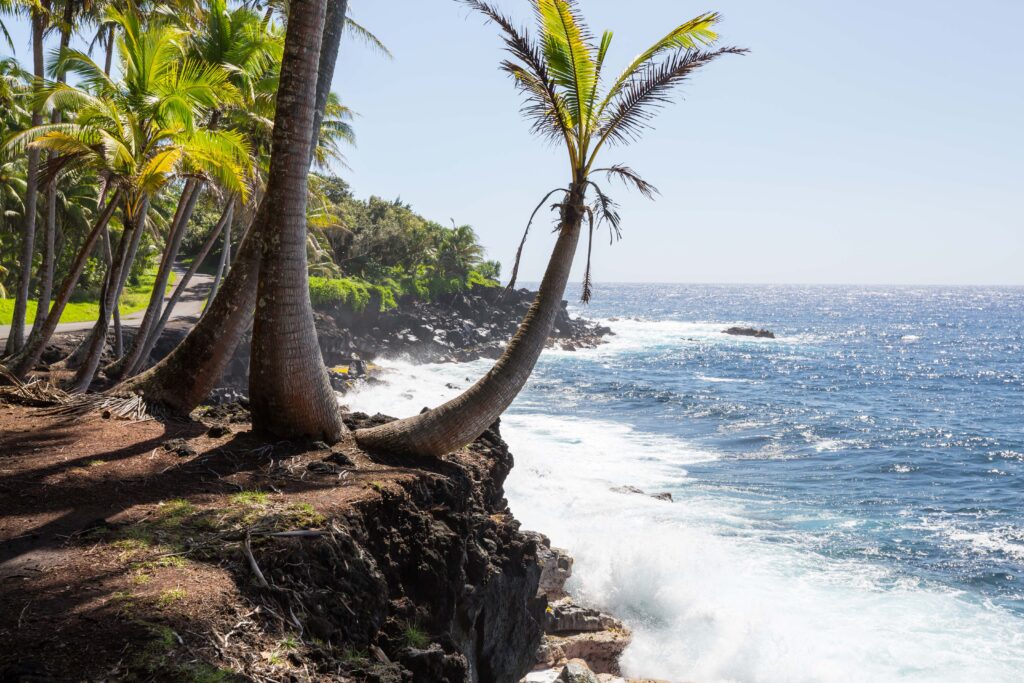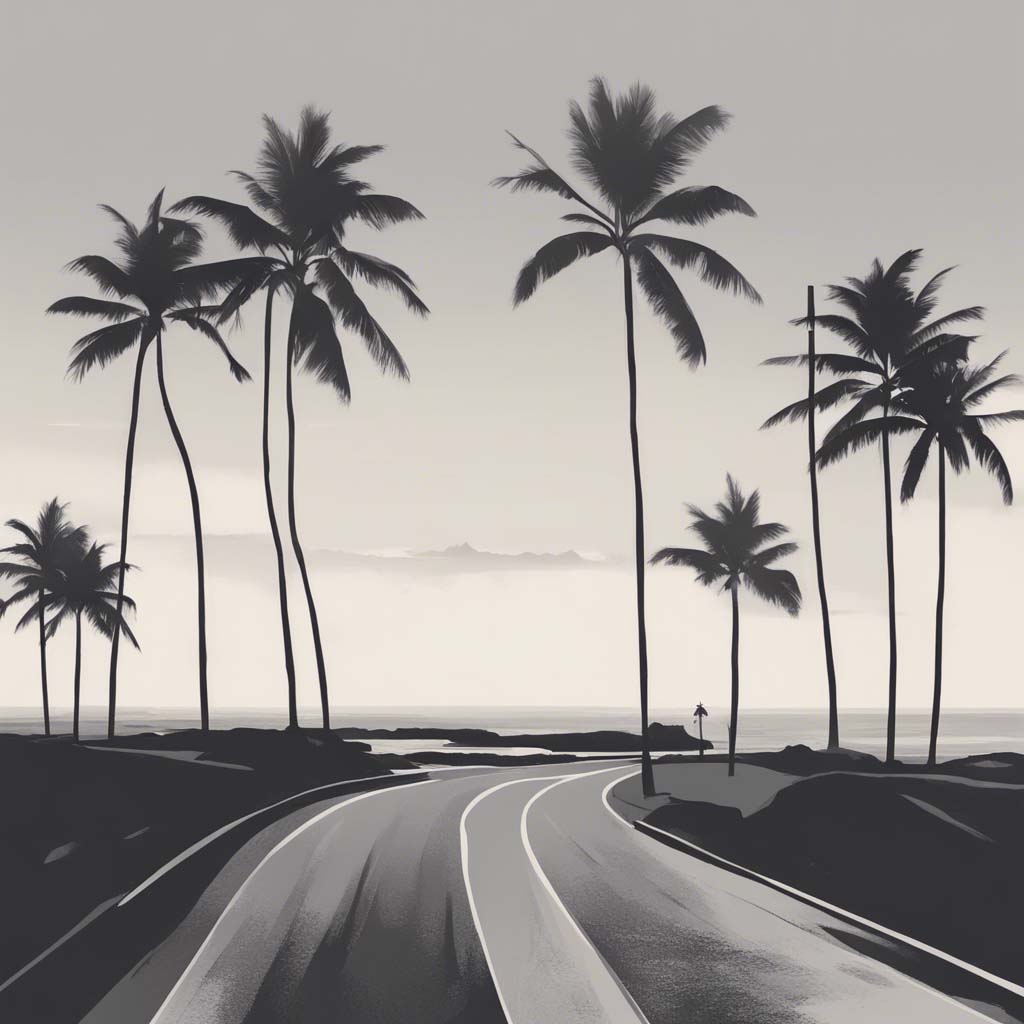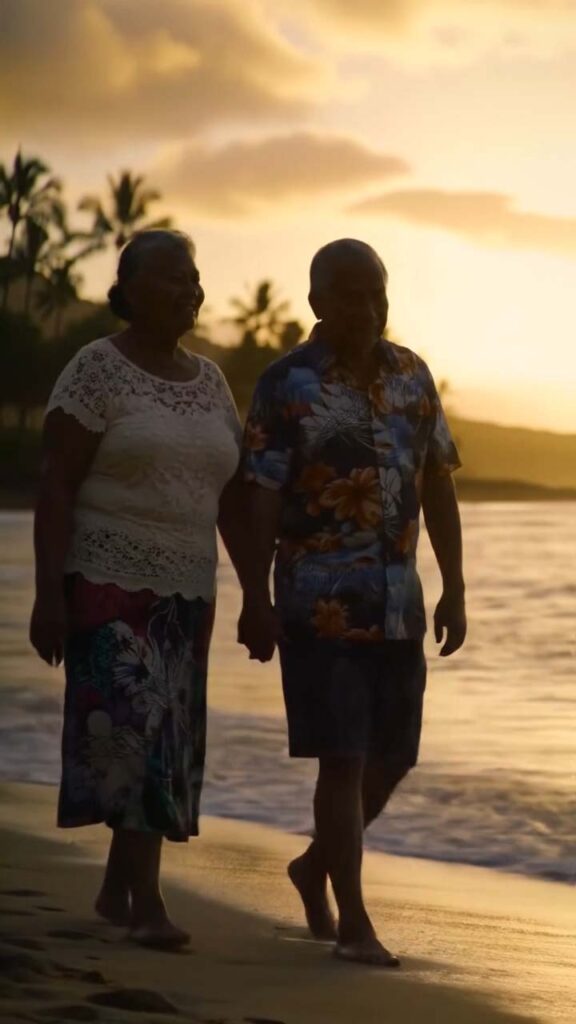Molokaʻi, often called the “Friendly Isle,” is one of the least developed and most culturally preserved of the Hawaiian Islands. It was formed by two volcanoes—East Molokaʻi and the now-eroded West Molokaʻi—creating a rugged landscape of sea cliffs, valleys, and plains. Over millions of years, erosion and geological activity shaped the island into a place of dramatic beauty, with some of the tallest sea cliffs in the world along its northern coast. Its isolation and minimal modern development have helped preserve much of its natural and cultural heritage.
The first settlers of Molokaʻi were Polynesians who arrived around 1,000 to 1,500 years ago. These early Hawaiians developed a rich agricultural society, particularly skilled in the use of fishponds (loko iʻa), which are still visible today. Molokaʻi earned a reputation as a center of spiritual power and traditional healing, with a strong priesthood and many heiau (temples). The island was also known for its hula traditions and was regarded as a place of deep mana (spiritual energy), playing a vital role in Hawaiian culture.
During the 19th century, Molokaʻi became internationally known for the Kalaupapa Peninsula, where people with Hansen’s disease (leprosy) were forcibly relocated. Beginning in 1866, thousands of individuals were exiled to the remote peninsula, isolated from the rest of the world. Father Damien, a Belgian priest who arrived in 1873, became famous for his work with patients there and was later canonized as Saint Damien. The Kalaupapa settlement remains a significant historical and emotional part of Molokaʻi’s identity.
Molokaʻi avoided much of the large-scale development seen on other islands, particularly after the collapse of its pineapple industry in the late 20th century. This economic shift led to struggles with unemployment and population decline, but it also reinforced local resistance to outside development. Many residents have strongly opposed resort construction, cruise ship docking, and other tourism-heavy ventures in order to preserve their land, culture, and way of life.
Today, Molokaʻi stands out as a place where traditional Hawaiian values still thrive. Most of the population is Native Hawaiian or part-Hawaiian, and community ties remain strong. Visitors to the island find a slower pace, a deep sense of place, and living examples of sustainable practices passed down for generations. With its stunning landscapes, quiet beaches, and rich history, Molokaʻi offers a glimpse of what old Hawaiʻi may have looked and felt like—and what it still can be.



Molokaʻi, known for its untouched landscapes and quiet charm, offers a unique beach experience far from the crowds of the more developed Hawaiian islands. While its beaches are often remote and less commercialized, they are rich in beauty, cultural significance, and solitude. Here are the five best beaches on Molokaʻi, and why they stand out among the rest:
🏖️ 1. Papohaku Beach (West End)
Why it’s the best: Papohaku is one of the largest white sand beaches in all of Hawaii—about 3 miles long and incredibly wide. It’s rarely crowded, making it perfect for peaceful walks, sunset views, and stargazing. Though strong currents can make swimming risky, its sheer size and serenity make it Molokaʻi’s most iconic beach.
🏖️ 2. Kepuhi Beach
Why it’s special: Just north of Papohaku, Kepuhi Beach is set against a dramatic backdrop of cliffs and open ocean. It’s a favorite spot for photographers and experienced surfers in the winter. In calmer summer months, it can offer good swimming and beachcombing. Its dramatic scenery and sense of remoteness make it stand out.
🏖️ 3. Halawa Beach Park (East End)
Why it’s unique: Located at the end of a long scenic drive through Halawa Valley, this beach is backed by lush mountains and waterfalls. It’s rich in cultural history and natural beauty, offering a rare glimpse into Molokaʻi’s ancient past. The waves can be rough, but it’s perfect for picnicking and enjoying the view in a sacred, tranquil setting.
🏖️ 4. Kumimi Beach (also known as Murphy’s Beach, East End)
Why it’s a top pick: One of the few Molokaʻi beaches with calm, shallow water that’s great for snorkeling. It’s easily accessible along Highway 450 and features a coral reef close to shore, teeming with marine life. Because it’s one of the safest swimming spots on the island, it’s a go-to for families and beginner snorkelers.
🏖️ 5. One Aliʻi Beach Park
Why it’s loved by locals: Located near Kaunakakai, this beach park is historically significant and community-focused. It has calm waters, picnic tables, restrooms, and shade, making it ideal for family gatherings and relaxing swims. While not as remote or dramatic as some others, its accessibility and friendly atmosphere make it a Molokaʻi favorite.
Molokaʻi’s beaches aren’t built for crowds—they’re built for quiet connection with nature and culture. Whether you’re looking for adventure, snorkeling, or solitude, these five offer the best of what the island has to give. 🌺 Let me know if you want help finding accommodations near any of these or hiking trails nearby!
